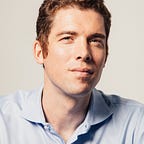Why ‘Risk’ Is the Word of the Year
The president is a walking, talking, tweeting risk factor for the world
 This August, the California utility Pacific Gas & Electric (PG&E) made a small bit of insurance history when it sold the first catastrophe bond specifically designed to cover risk from wildfires. Companies facing significant financial exposure to natural disasters can use catastrophe bonds to transfer some of that risk to investors. Bondholders benefit because they collect attractive interest rate payments for each year that passes without a catastrophe until the bond reaches maturity. But if a catastrophe hits that passes a contractual threshold — in the case of PG&E’s bond, major wildfire damage for which the company itself is shown to be responsible — the bond can plummet in value, and investors may lose some or even all of their money.
This August, the California utility Pacific Gas & Electric (PG&E) made a small bit of insurance history when it sold the first catastrophe bond specifically designed to cover risk from wildfires. Companies facing significant financial exposure to natural disasters can use catastrophe bonds to transfer some of that risk to investors. Bondholders benefit because they collect attractive interest rate payments for each year that passes without a catastrophe until the bond reaches maturity. But if a catastrophe hits that passes a contractual threshold — in the case of PG&E’s bond, major wildfire damage for which the company itself is shown to be responsible — the bond can plummet in value, and investors may lose some or even all of their money.
Those who bought PG&E’s offering were betting that nothing catastrophic would happen over the three-year life of the bond, despite the reality of climate change-related increase in wildfires in California in recent years. They were wrong. This fall’s devastating Camp Fire in Northern California burned more than 18,000 structures and killed at least 85 people, making it both the most extensive and the deadliest wildfire in the state’s history.
